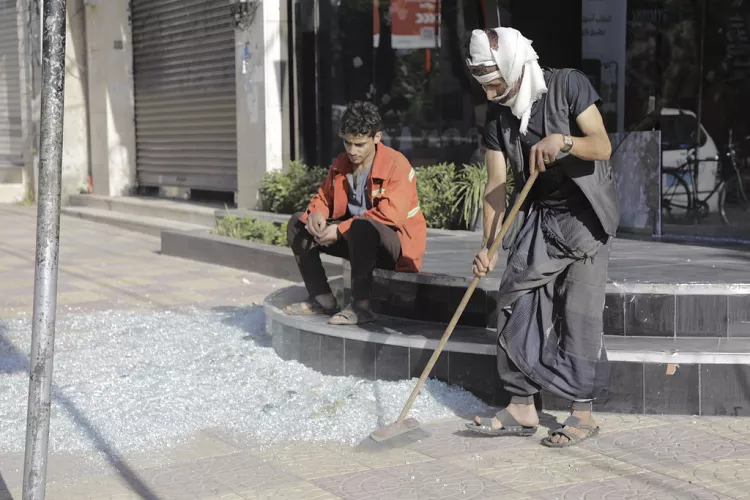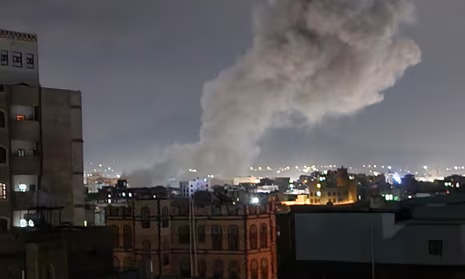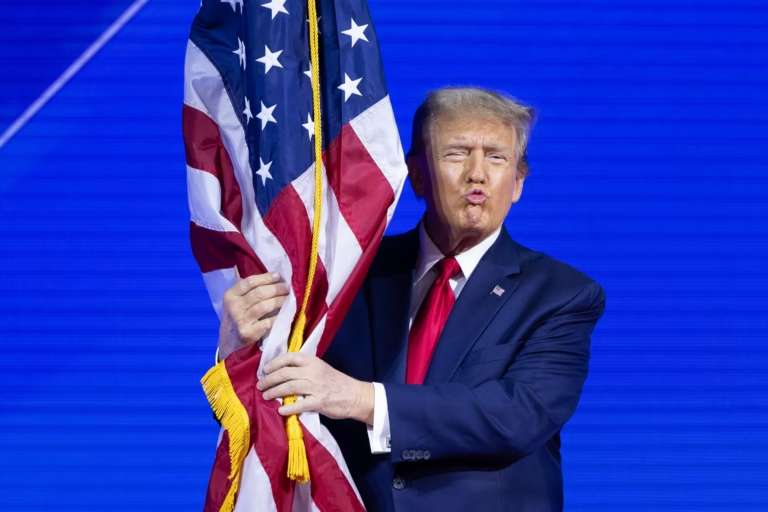A Major Military Response
The United States carried out a powerful wave of airstrikes on Houthi-controlled areas in Yemen on March 15, 2025. These strikes were ordered by President Donald Trump in response to ongoing Houthi attacks on ships in the Red Sea. The Houthis, a rebel group backed by Iran, have been targeting commercial and military vessels in the region for months

(Yemenis clean debris in front of their shops after a U.S. airstrikes in Sanaa, March 16, 2025. (AP Photo/Osamah Abdulrahman)
“Our brave Warfighters are carrying out aerial attacks on the terrorists’ bases, leaders, and missile defenses to protect American shipping, air, and naval assets,” Trump stated on social media. He made it clear that no enemy force would be allowed to disrupt international trade and navigation.
Heavy Bombing and Its Impact The attacks focused on multiple Houthi strongholds, including the capital city of Sanaa and the northern province of Saada. Other provinces hit by airstrikes included Hodeida, Bayda, Marib, and Dhamar. According to reports, explosions lit up the sky in these areas, and thick black smoke was seen rising from military sites.

(Smoke rises from a US airstrike in Sana’a, Yemen. Photograph: Osamah Abdulrahman/AP)
Source: Theguardian.com
The Houthi-run Health Ministry reported that at least 31 people, including women and children, were killed. Over 100 others were injured in the airstrikes. Residents in the affected areas described the bombings as terrifying, with one witness saying, “The explosions were so strong, it felt like an earthquake.”
Why Did the US Strike? For months, the Houthis have launched missiles and drones at international ships, causing major disruptions in global trade. They claim to be defending the people of Gaza in response to Israel’s actions. However, the United States and its allies see these attacks as a serious threat to global stability.
The Red Sea is a critical trade route, with about 15% of the world’s goods passing through its waters. Due to the Houthi attacks, shipping companies have had to reroute vessels around Africa, adding billions of dollars in extra costs.
Iran’s Role and US Warnings President Trump also sent a strong message to Iran, warning the country to stop supplying weapons and support to the Houthis. He stated that if Iran continues its involvement, the US will hold it “fully accountable.”
Despite these warnings, Houthi leaders have vowed to continue their attacks. Nasruddin Amer, a spokesperson for the group, said, “Sanaa will remain Gaza’s shield and support. We will not back down.” Another Houthi official dismissed Trump’s statements as “false and misleading.”
The Bigger Picture
This is not the first time the US has attacked Houthi targets. Similar strikes were carried out under President Joe Biden’s administration in response to previous Houthi threats. However, Saturday’s attack was the first major US military action against the Houthis under Trump’s second term.
The US military has confirmed that this is just the beginning of a longer campaign to stop Houthi aggression. Officials have said that additional strikes will take place if the group does not change its course.
What Happens Next? The situation in Yemen remains uncertain. The US says it will continue its strikes until the Houthis stop their attacks on international shipping. Meanwhile, Iran’s reaction will be closely watched, as any direct conflict between the US and Iran could escalate tensions even further.
The world is now waiting to see if these airstrikes will successfully put an end to the Houthi threat or if they will lead to an even larger conflict in the Middle East.
This further escalates the global tension. With United States as a country that could benefit from it

